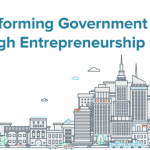Four Alternative Types Of Accelerator That Startups Overlook
As startup accelerators multiply, some argue that they do a better job of serving their own interests than those of the businesses they’re supposed to help launch. But that suspicion glosses over the diverse range of business models that more and more accelerators are adopting—even though they may not be getting quite as much attention.
Traditionally, accelerators tend to see money as the driving force behind startups’ success, and make cash their top focus. Talent and technology become secondary priorities. In reality, though, those two things are more often what leads to success for accelerators and startups alike—then the money follows.
But the accelerators that recognize this aren’t the ones that tend to get the most attention. A money-focused model is spreading instead as cities launch their own accelerator programs in a bid for a slice of Silicon Valley status. These accelerators invest money up front, tipping the scales in favor of the accelerator. Where X = accelerator, Y = startup, and Z = financial investment, the equation changes from X = Y (with accelerator and startup on equal footing) to X + Z = Y (where money plays the decisive role).
It’s important to look beyond accelerators that think this way, though. Here are four other kinds of accelerator that every entrepreneur should consider.
Model 1: Leveraging Equity
Revenue models among accelerators can vary. They may require money upfront but differ when it comes to structure. Some accelerators are now focusing on building equity as opposed to making a specific monetary investment. For example, 500 Startups has a global accelerator program that provides a cash exchange to the startup for 5% equity upfront. The startups then also pay for the program with part of the cash exchange they receive.
While this model focuses on a monetary investment, the equity component isn’t so closely tied to an exact number, and it relies more on the startups’ founder to really make it pay off for the accelerator—equity is only worth something if the startup succeeds.
This model may make sense for some startups, but founders should consider how comfortable they are offering equity and whether or not the accelerator’s resources might benefit them enough to justify it. After all, the equity loss for startups in these arrangements can be quite high, so it’s usually only suitable for very early-stage businesses with lower valuations. What’s more, it can be a challenge for accelerators working under this model to attract high-caliber startups that may be more reluctant to give up substantial equity upfront.
Model 2: Trading Services
Some accelerators focus on a combination of cash and equity. For example, Founders Space offers an accelerator and incubator program that doesn’t invest in its startups but instead offers services in exchange for cash and equity upfront.
For startups with limited resources, this may be the best model—but this type of accelerator usually isn’t focused on a specific niche and is instead offers more general support like mentoring sessions, classes, and workshops. Startups looking at this model need to consider what assistance they need before deciding whether trading services for cash and/or equity is a good move.
Model 3: Zero Down
Aside from equity models, there are also accelerators that don’t charge startups up front, like Stanford’s nonprofit StartX and Microsoft Accelerator. There are still a few caveats, though. StartX doesn’t require a program charge or equity upfront, and the Stanford-StartX Fund gives its founders the option to receive investment from the fund, a structure designed to meet the needs of the founders in the program. Microsoft’s Accelerator provides free resources but has some restrictions around using products provided by the organization.
Related:
Inside The Fastest-Growing Accelerator for Women And Minorities
Four Lessons I’ve Learned Working With An Elite Startup Accelerator
Do Accelerators And Incubators Serve Themselves Better Than Startups?
Reinventing The Tech Accelerator
Corporate accelerators like Microsoft’s may overly encourage the use of their products, with the chief purpose not making money but “incubating” its parent company’s ecosystem. So while this model can be valuable for startups that are short on funds and looking to prep for investment, it’s smart to know what potential tradeoffs there might be, too.
Model 4: Negotiating Rate
Some accelerators are free to join initially, then may include charges toward the end of their programs. TechCode’s accelerator, which I work for, is free to join initially, but the startups do have to pay if they feel the program has adequately helped them meet their previously outlined goals or milestones. On the flip side, TechCode doesn’t promise investment in all the startups we work with, though it does choose to invest in some startups over the course of the program.
Models like this can help make sure there’s a true alignment between startup and accelerator. Of course, for the accelerator, it’s a risk to have to fund the program out of pocket and only make money after demonstrating your usefulness. But it’s often the case that both sides walk away with a stronger sense of mutual benefit.
There are pros and cons to all four of these alternative accelerator models, but that’s just as true of the predominant form accelerators have tended to take. In the meantime, these other options are still under-utilized because there’s quite a lot of noise in the accelerator industry. Many of the entrepreneurs I speak with don’t have a strong grasp of the range of options that are out there. And while the likes of StartX or 500 Startups are brand names, the models they represent still tend to get short shrift. The sooner we can change that, we may begin seeing more startups actually succeed—no matter what paths they take to get there.
Luke Tang is the general manager of TechCode’s U.S. accelerator.
Update: A previous version of this article misstated the policy of the Stanford Endowment Fund toward the founders it works it. The error has been corrected.
Fast Company , Read Full Story
(62)













